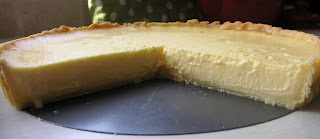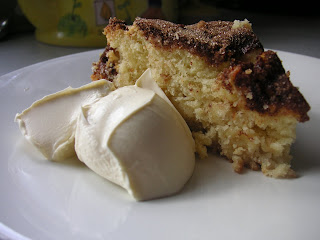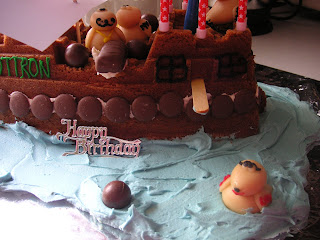
Recently I’ve made quite a few things with almond and the CCM (Caked Crusader’s Ma) has to eat these sparingly because as much as she loves almonds, they don’t reciprocate the love. So this one’s for her!

I found this lemon oil and it’s made solely from pressing lemons. That may sound an obvious comment but often you’ll find additional ingredients to make the expensive ingredient go further – no such tactics here. I bought this lemon oil from Lakeland Limited who state that it takes 330 lemons to make one bottle...that’s a lot of lemons! I added a few drops to the pastry for a subtle lemon tang and some more to the lemon juice just to perk up the zing-factor. You could use lemon zest to achieve the same objective but I wanted the lemon filling to be smooth.

Here’s the beautiful pastry straight from the fridge and about to be baked blind:

As the tart cooled I found that the surface cracked. Admittedly it isn’t desirable but it didn’t effect the flavour or texture, and with judicious cutting (i.e. cutting along the cracks) you can eliminate most of them.

The CCM’s verdict? She was pleased! She claimed that this is a lemon tart for people who never find things lemony enough. It also announced itself with that lemon tickle at the back of the throat – again, I’m reliant on the CCM here but this is apparently a good thing. The CCM also thought this would be a good dessert for people who usually find dessert too sweet.


Always sieve a custard-type filling before baking. Why? This photo is probably the best answer!

Ingredients:
For the pastry:
173g plain flour
120g unsalted butter
3 tablespoons icing sugar
2 egg yolks
Dash of lemon oil or, if preferred, the finely grated zest of 1 lemon
For the filling:
5 eggs, beaten
150g caster sugar
Juice of 5 lemons (if required, add the grated zest to the mix as well)
300ml double cream
How to make:
- Put all the ingredients for the pastry in a food processor and whizz together until a soft ball of dough is formed.
- Roll the pastry out between two sheets of baking paper and use to line a 23cm loose bottomed flan tin. No need to grease this, as the pastry is rich and buttery enough. Leave any excess pastry hanging over the edge of the flan tin (it’s always best to leave trimming the pastry until after you have blind baked it).
- Leave to chill in the refrigerator for 1 hour.
- Preheat the oven to 190°C/fan oven 170°C/375°F/Gas mark 5.
- Line the pastry case with baking paper and baking beans, and bake for 15 minutes.
- Remove the paper and beans and return to the oven for a further 5 minutes. Once you have removed the pastry from the oven reduce the temperature to 150°C/fan oven 130°C/300°F/Gas mark 2.
- Meanwhile, start making the filling: mix the eggs and sugar until combined.
- Beat in the lemon juice (and zest or oil, if using) followed by the double cream.
- Sieve the filling before pouring into the pastry case.
- Bake for 30 minutes or until the filling has only a slight tremor if you gently shake the tin. Mine took 35 minutes to reach this stage, but once you’re past the 30 minute mark watch it closely as mine was very liquid still at this point and then set quickly.
- Turn the oven off but leave the tart where it is. Let the tart cool in the oven – leave the oven door ajar. Without cooking the tart further, this helps the filling to firm up.
- When cool, transfer the tart to the fridge and chill thoroughly before serving, ideally 24 hours.
- Serve with cream or crème fraiche.
- Bask in glory at the wonderful thing you have made.
- Eat.




















































